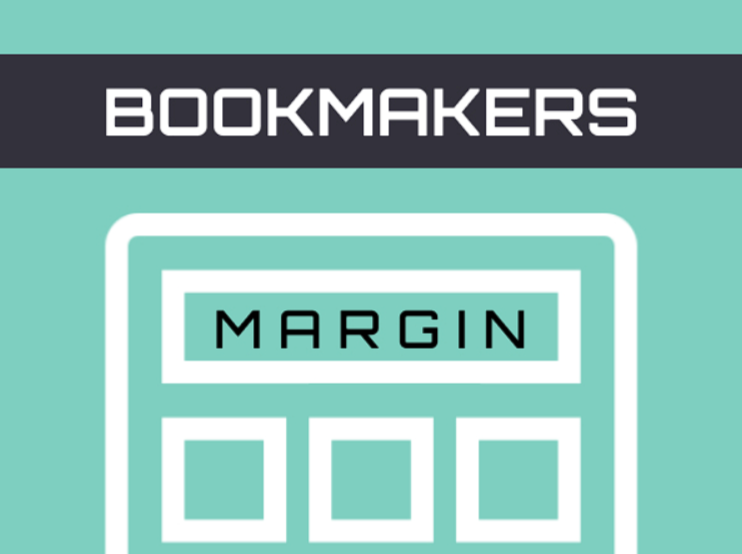In the world of sports betting, understanding bookmaker margins is crucial for bettors to make informed decisions and maximize their potential returns. Bookmaker margins, also known as the overround or vigorish, represent the profit that bookmakers build into the odds they offer. This article explores the concept of bookmaker margins, how they are calculated, and their impact on betting odds and outcomes.
What Are Bookmaker Margins?
Definition and Purpose
Bookmaker margins are the profit margins that bookmakers include in the odds they offer to ensure they make a profit regardless of the outcome of the event. These margins are essential for the sustainability and profitability of the betting industry.
- Profit Margin: The margin represents the percentage of profit that the bookmaker aims to make on each bet.
- Risk Management: Margins help bookmakers manage risk by ensuring they have a buffer to cover potential losses and maintain profitability.
- Market Equilibrium: Margins help maintain market equilibrium by ensuring that the bookmaker can balance the books and minimize arbitrage opportunities.
How Margins Are Incorporated
Bookmaker margins are incorporated into the odds in a way that ensures the bookmaker makes a profit regardless of the outcome. This is achieved by adjusting the odds to be slightly less favorable to the bettor than the true probabilities of the outcomes.
- Odds Adjustment: The odds are adjusted to include the margin, making them slightly less favorable to the bettor.
- True Probability vs. Implied Probability: The true probability of an outcome is the actual likelihood of it occurring, while the implied probability is the probability suggested by the odds, including the margin.
- Overround: The overround is the total percentage of the margins built into the odds for all possible outcomes of an event.
Calculating Bookmaker Margins
Understanding Implied Probability
Implied probability is the probability suggested by the odds, including the bookmaker’s margin. Understanding implied probability is crucial for calculating bookmaker margins.
- Formula for Implied Probability: Implied Probability = 1 / Decimal Odds
- Example: If the decimal odds for an outcome are 2.0, the implied probability is 1 / 2.0 = 0.5 or 50%.
Calculating the Overround
The overround is the total percentage of the margins built into the odds for all possible outcomes of an event. Calculating the overround involves summing the implied probabilities of all outcomes and subtracting 1.
- Formula for Overround: Overround = (Sum of Implied Probabilities) – 1
- Example: If the implied probabilities for three outcomes are 0.5, 0.3, and 0.2, the overround is (0.5 + 0.3 + 0.2) – 1 = 0 or 0%.
Real-Life Example
Let’s consider a simple example to illustrate how bookmaker margins are calculated:
- Event: A tennis match between Player A and Player B.
- Odds: Player A to win: 1.8, Player B to win: 2.2.
- Implied Probabilities:
- Player A: 1 / 1.8 ≈ 0.5556 or 55.56%
- Player B: 1 / 2.2 ≈ 0.4545 or 45.45%
- Overround: (0.5556 + 0.4545) – 1 ≈ 0.0101 or 1.01%
In this example, the bookmaker’s margin (overround) is approximately 1.01%.

Impact of Bookmaker Margins on Betting
Reduced Payouts
Bookmaker margins result in reduced payouts for bettors, as the odds are adjusted to be less favorable than the true probabilities of the outcomes.
- Lower Returns: Bettors receive lower returns on their wagers due to the margin built into the odds.
- Long-Term Impact: Over time, the impact of margins can significantly reduce the overall returns for bettors, especially those who place a large number of bets.
Market Efficiency
Bookmaker margins contribute to market efficiency by ensuring that the odds reflect the true probabilities of the outcomes as closely as possible while still allowing the bookmaker to make a profit.
- Balanced Books: Margins help bookmakers balance their books by ensuring that they do not have significant liability on any single outcome.
- Minimized Arbitrage: Margins help minimize arbitrage opportunities, ensuring that the market remains efficient and fair.
Competitive Landscape
In a competitive betting market, bookmakers with lower margins can attract more bettors by offering more favorable odds. This can lead to a more competitive landscape where bookmakers strive to offer the best value to bettors.
- Attractive Odds: Bookmakers with lower margins can offer more attractive odds, drawing in more bettors.
- Customer Loyalty: Offering competitive odds can help bookmakers build customer loyalty and retain bettors over the long term.
Strategies for Dealing with Bookmaker Margins
Shopping for the Best Odds
One effective strategy for dealing with bookmaker margins is to shop for the best odds by comparing the odds offered by different bookmakers. This can help bettors find the most favorable odds and maximize their potential returns.
- Odds Comparison Sites: Use odds comparison sites to quickly and easily compare the odds offered by different bookmakers.
- Multiple Accounts: Consider opening accounts with multiple bookmakers to take advantage of the best odds available for each bet.
Focusing on Value Bets
Focusing on value bets, where the odds offered by the bookmaker are higher than the true probability of the outcome, can help bettors overcome the impact of margins and achieve better returns.
- Identifying Value Bets: Conduct thorough research and analysis to identify value bets where the odds are more favorable than the true probabilities.
- Long-Term Strategy: Focusing on value bets can be a long-term strategy that helps bettors achieve consistent profits despite the impact of margins.
Managing Bankroll Effectively
Effective bankroll management is essential for sustainable and responsible betting, especially when dealing with bookmaker margins.
- Set a Budget: Determine a budget for your betting activities and stick to it to avoid overspending.
- Diversify Bets: Spread your bets across different markets and events to minimize risk and maximize potential returns.
- Avoid Chasing Losses: Resist the temptation to place impulsive bets to recover losses, as this can lead to further financial setbacks.
Conclusion
Understanding bookmaker margins is crucial for bettors to make informed decisions and maximize their potential returns. By recognizing how margins are incorporated into the odds, calculating the overround, and implementing effective strategies, bettors can navigate the betting landscape more effectively. Whether you are a seasoned bettor or new to the world of sports betting, staying informed about bookmaker margins can help you achieve greater success and enhance your overall betting experience. By shopping for the best odds, focusing on value bets, and managing your bankroll effectively, you can overcome the impact of margins and maximize your potential returns.
